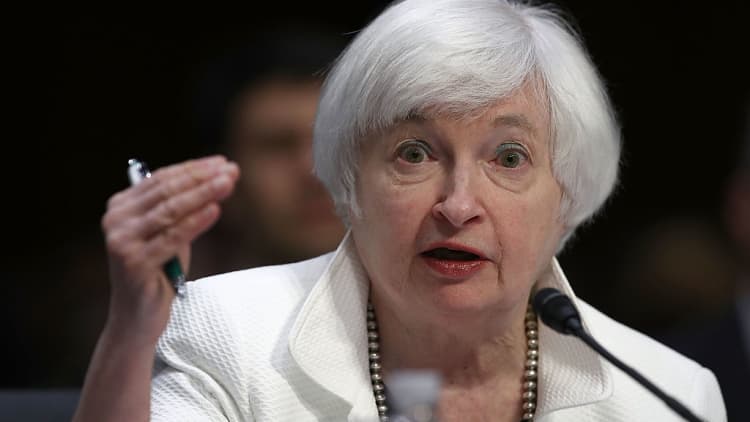If the Federal Reserve is hanging its policymaking hat on the August jobs number, then it's likely to be disappointed and unmotivated to raise rates.
In large part, that's because the month has been tied for the worst of the year for job creation during the post-recession recovery and the noisiest in terms of how much the initial number differs from the final revision two months later.
So if the Fed is looking for confirmation from the labor market that the time is ripe for a rate hike, August could provide little solace. The report is always closely watched on Wall Street, but this month's will be especially important as many market-watchers believe a good number could propel the Fed to increase rates at the Federal Open Market Committee meeting Sept. 20-21.
"Investors are going to have to seriously consider the possibility of a September hike if we get a strong set of numbers on Friday," said Luke Bartholomew, investment manager at Aberdeen Asset Management. "Everyone had largely discounted this scenario until now, so we might get a wobble in risk markets if the numbers are good."
But the following two charts show how strange of a month August has been historically since the end of the Great Recession. The first chart is a comparison of all months showing the mean (average) and median (midpoint) for each, while the second shows the initially reported jobs number in August compared to the final tally.
One feature to note is the notorious "zero" print in 2011, when the Bureau of Labor Statistics' initial count showed that the economy had created no jobs for that August, only to revise it up to 107,000 later.
Market expectations are for payrolls to go up about 180,000 for this August in a year that has seen an average increase of 186,000. A report Wednesday from ADP and Moody's Analytics indicated that private companies added 177,000 new jobs in August, though the ADP and government reports can differ sharply.
History strongly suggests that Wall Street, and the Fed, will be disappointed.

One interesting dynamic of the second chart is that the average initially reported August nonfarm payrolls number during the period was just 87,700. Moreover, the typical August report over the past five years has missed market expectations by 52,000, according to Joseph LaVorgna, Deutsche Bank's chief U.S. economist. And if that's not enough, nine of the last 12 Augusts have missed expectations, with an average downside surprise of 46,000.
Even the Fed has conceded that the pace of job growth has slowed. But a big whiff on the number Friday could dissuade policymakers from a September rate hike.
"Despite the 250K-plus gains in employment over the last two months, the underlying pace of job growth is slowing," LaVorgna said in a report for clients. "A slower pace of hiring is entirely consistent with the historical performance of the labor market at the latter stages of the business cycle."
LaVorgna said the labor market is headed toward a full-employment stabilization period where about 125,000 new jobs a month will be the norm. For August, he expects 160,000.
Whether that would be enough to move the Fed is tough to say. The market sees a 27 percent chance of a September rate increase, despite some recent fairly hawkish statements from Fed officials including ChairJanet Yellen. Traders assign a 55.4 percent chance to a move in December, according to CME calculations.
Regardless, the pace forward is likely to be slow. Fed funds futures contracts don't fully price in a hike until June 2017 and no additional increase after that until June 2019.
"I think they should hike in September," said Mark Zandi, chief economist at Moody's Analytics. "I think they're running the risk that the longer they wait to normalize rates, the greater the odds that the economy overheats."


